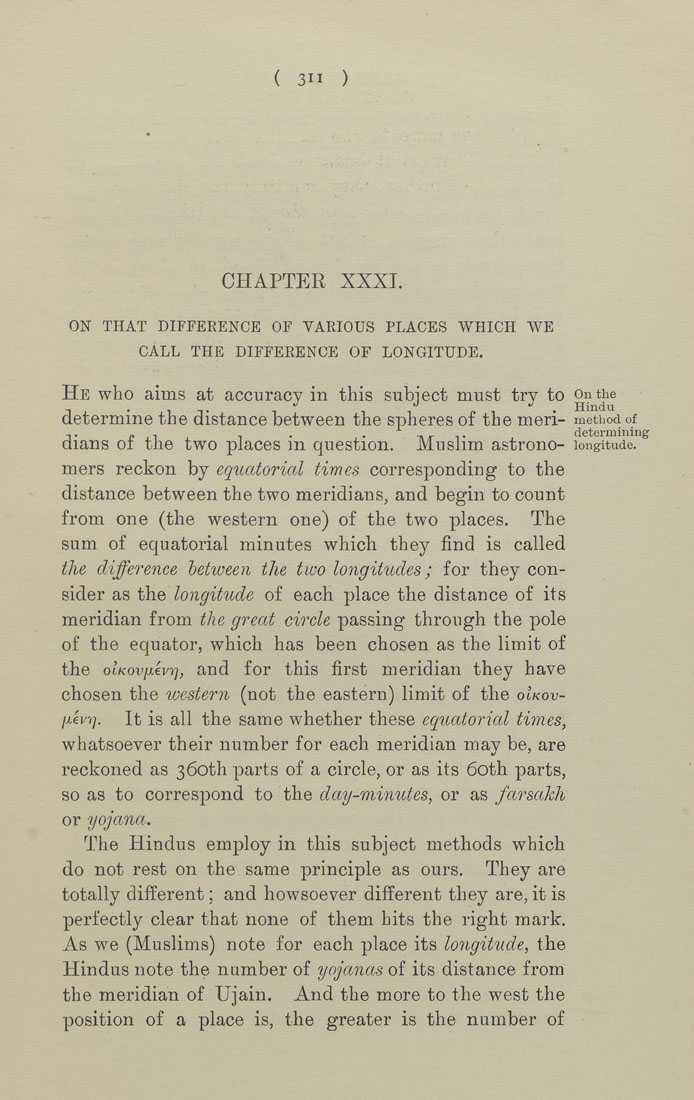Bīrūnī, Muḥammad ibn Aḥmad, Alberuni's India (v. 1)
(London : Kegan Paul, Trench, Trübner & Co., 1910.)
|
||
|
|
|
|
| Page 311 |

( 311 ) CHAPTER XXXL ON THAT DIFFERENCE OF VARIOUS PLACES WHICH W^E CALL THE DIFFERENCE OF LONGITUDE, He who aims at accuracy in this subiect must try to Onthe determine the distance between the spheres of the meri- method of -,. (• ,1 1 - • -\r T determining dians ot the two places m question. Muslim astrono- longitude. mers reckon by equatorictl times corresponding to the distance between the two meridians, and begin to count from one (the western one) of the two places. The sum of equatorial minutes which they find is called the difference hetween the two longitudes; for they con¬ sider as the longitude of each place the distance of its meridian from the great circle passing through the pole of the equator, which has been chosen as the limit of the olKovjievi^, and for this first meridian they have chosen the western (not the eastern) limit of the oIkov- pivi-j. It is all the same whether these equatorial times, whatsoever their number for each meridian may be, are reckoned as 360th parts of a circle, or as its 60th parts, so as to correspond to the day-minutes, or as farsakh or yojanct. The Hindus employ in this subject methods which do not rest on the same principle as ours. They are totally different; and howsoever different they are, it is perfectly clear that none of them hits the right mark. As we (Muslims) note for each place its longitude, the Hindus note the number of yojctnas of its distance from the meridian of Ujain. And the more to the west the position of a place is, the greater is the number of |
| Page 311 |







